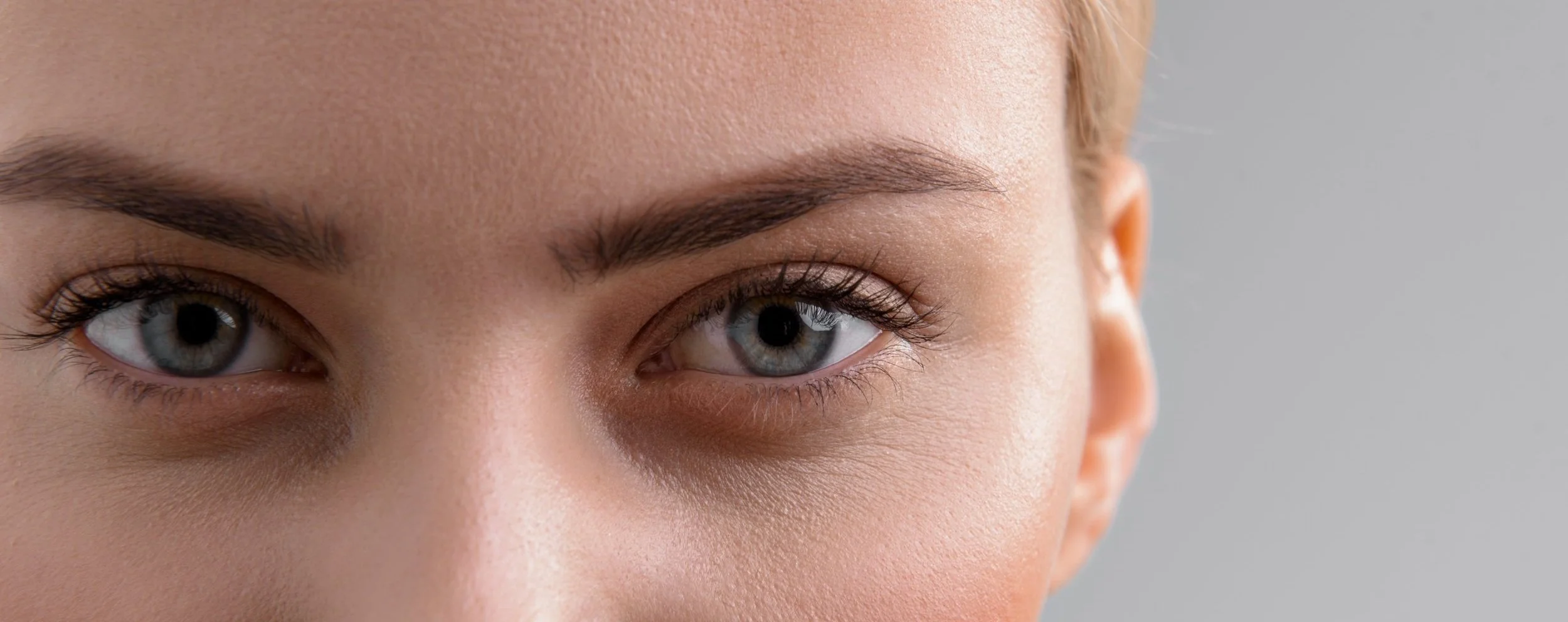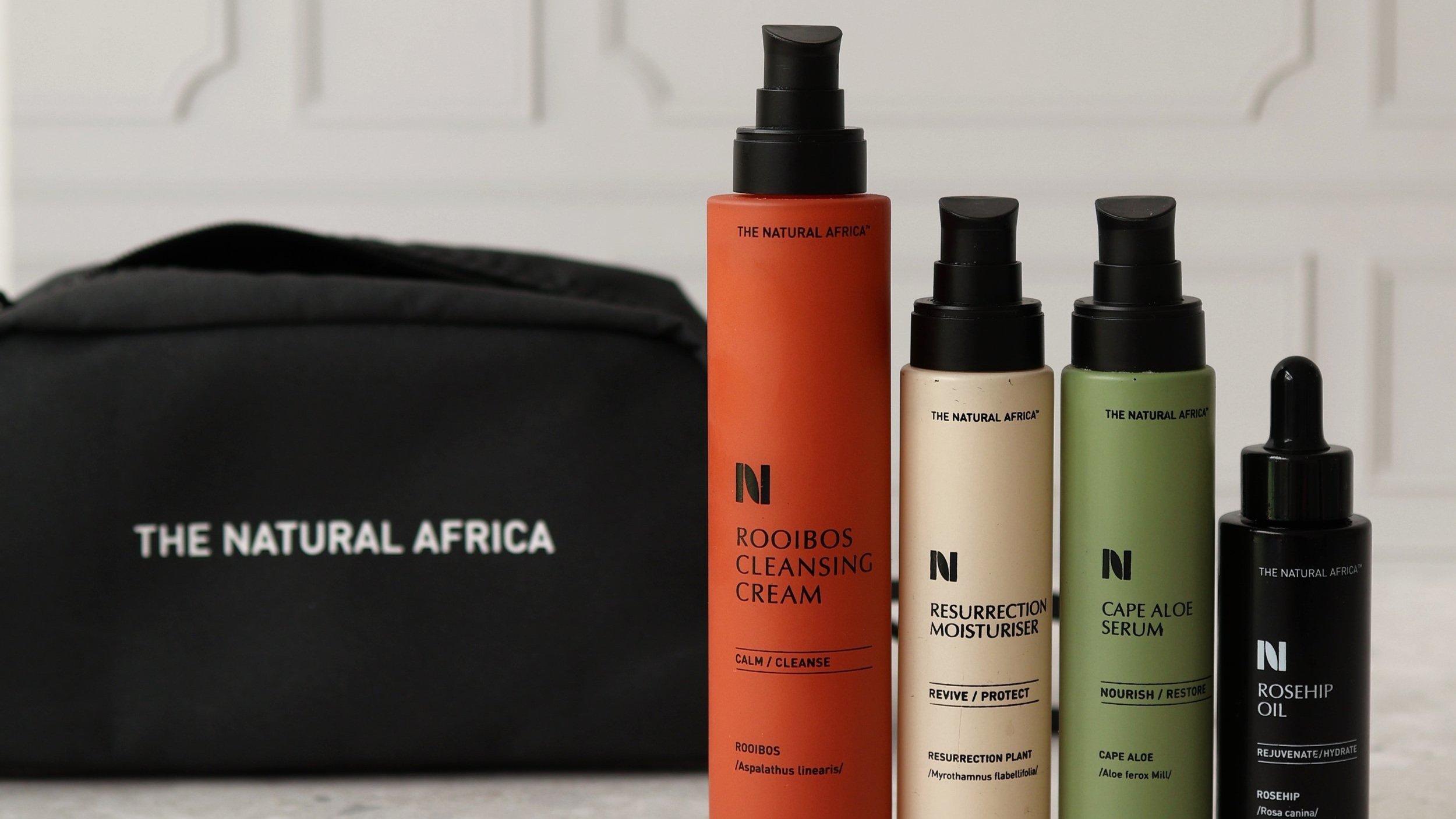Health Notes: Why you shouldn’t trust some eyelash growth enhancers PLUS discover one that’s safe and really works
Eyelash growth enhancers are Big Business but they’re not all proven safe and/or effective. Sarah reports on Natucain, a proven natural product for lashes, brows and also hair loss, and the longstanding concerns with some OTC products
In 2008, Dr. Stephanie Seyda, then based at German Pharma Laboratories in Meinertzhagen, was working on an eyelash growth enhancing serum. She gave her ‘very best friend’ a lab sample to take on holiday. The friendship was never quite the same after that because her friend came back with darkened eyelids and dark circles underneath. ‘It made our relationship much edgier’, Dr. Seyda recalls regretfully.
The problem was the active ingredient in the serum: a synthetic compound called MDN - methylamido dihydro noralphaprostal - that mimicked a prostaglandin hormone naturally found in the body. (These synthetic versions, which are very similar to the original compound, are often referred to as analogs/analogues.)
It all started around 2001 with a glaucoma drug called Lumigan, which was – and still is - based on bimatoprost, also a synthetic version of a prostaglandin hormone. The drug from pharmaceutical company Allergan had a surprising side effect. It was found to significantly increase lash growth and thickness – although only while it was being used. The company sniffed a new market.
Although bimatoprost had well-recognised and potentially concerning side effects when used around the eyes, it was put through trials for safety and efficacy as an eyelash growth enhancer and subsequently approved by the US FDA (the drug regulatory body) but on prescription only. Latisse became available for the treatment of hypotrichiasis (less than normal hair growth). It was also commonly prescribed for eyelash loss due to chemotherapy, alopecia areata and also trichotillomania, where people pluck out hairs including lashes.
Latisse was one of the most successful pharmaceutical launches ever and the cosmetic industry perked up its ears. As Dr Tracy Doll, an Assistant Professor at Pacific University College of Optometry, pointed out in the Optometry Times, ‘growing eyelashes is big business’, with the US market expected to reach $234.59 million by 2023. Not surprisingly, ‘the beauty industry responded to the success of Latisse by rolling out its own versions of over-the-counter eyelash growth serums,’ said Dr Doll.
These cosmetic eyelash serums contained similar synthetic prostaglandin compounds to bimatoprost – like Dr Seyda’s MDN and others listed below – with the same potential side effects. But crucially, unlike the prescription version, these cosmetic over-the-counter products were not required either to go through clinical trials for safety and efficacy or to list possible side effects.
As well as hyperpigmentation (as Dr Seyda’s friend found), these synthetic prostaglandin hormones can lead to a change of eye colour, dry eyes, red rims and also affect pressure in the eye. That last is not surprising as the loss of vision with glaucoma is due to damage to the optic nerve caused an abnormally high pressure in the eye – bimatoprost works by reducing the pressure. A recent survey of 154 current and past users of eyelash growth serums revealed that more than one in four stopped using the products due to side effects. (There’s more on this below.)
But Dr Seyda’s experience with her friend led to another result. She started working on a natural hair growth enhancer. ‘Coming from a medical field I couldn't support the use of products like this on the face. I was convinced you could get the same kind of benefit using vegan ingredients of natural origin without side effects.’
A long period of research and development followed, leading to the launch of naturally-derived, hormone-free Natucain hair activator for hair growth on the scalp in 2020 followed by Natucain Lash Serum and Brow Serum /£59 each, supported by clinical cosmetic trials to prove their effectiveness. Lash Serum was shown to extend both the length of eyelashes and the thickness (ie the number of lashes) over 12 weeks. NB This is dependent on diligent twice-daily application to the upper lash line – you don't need to do bottom lashes as the product migrates every time you blink or close your eyes.
And readers, I can tell you hand on heart they work! My once-lush lashes had been growing more and more sparse but after seven weeks of dedicated, twice daily application to the upper lash line, I have noticeably longer thicker lashes – not the Jersey cow ones of decades back but very satisfactory indeed. My thin, overplucked brows look a bit thicker too; expect brows to take longer, Dr Seyda counsels.
You can order Natucain Lash Serum and Brow Serum online at victoriahealth.com.
So how do the products work? The Natucain patented growth enhancer, called MKMS24, is based on a complex of bamboo, lentils and thyme using plant stem cell technology. This is very different from human stem cell technology and does not carry the potential risks. The original concept came from agrichemical research but is not, Dr Seyda emphasises, based on genetic engineering.
Essentially, MKMS24 rebalances the phases of hair fall and regrowth whether the hair is on the scalp, brow or around the eyes. It shortens the telogen phase where hair is resting and then shedding, and prolongs the anagen phase where hair is growing. ‘It’s the balance that’s so important,’ explains Dr Seyda. So: less resting and shedding, more growing. You should see results within six to eight weeks on lashes (as I did), a bit longer with brows.
Does Natucain always work? According to Dr Seyda, the product won’t work as well if you use silicone-based skincare because the silicone acts as a shield so the serums cannot penetrate the dermis.
She ‘can’t promise’ the serums will work with cancer patients, who should discuss using them with their doctors. However, the Natucain hair growth product is being trialled at a German university medical clinic, used in combination with a cool cap.
UNDERSTANDING THE PROSTAGLANDIN EFFECT
Just to recap: the hyperpigmentation experienced by Dr Seyda’s friend was caused by the key ingredient MDN, a synthetic prostaglandin hormone, which is used to encourage growth. The discovery that synthetic prostaglandins could encourage thicker, longer, darker eyelashes came with the use of a glaucoma drug called Lumigan from pharma company Allergan based on a synthetic prostaglandin hormone called bimatoprost.
The eyelash effect led in 2008, to Allergan launching Latisse, also based on bimatoprost. This prescription-only product was approved by the FDA for the medical treatment of hypotrichiasis (less than normal hair growth). It became commonly used for eyelash loss due to chemotherapy, alopecia areata and trichotillomania. However, Latisse is now banned in several countries including the UK. (The Royal Australian and New Zealand College of Ophthalmologists’ Position Statement is useful reading.)
Watching the huge success of Latisse, the cosmetics industry started to develop their own over-the-counter eyelash growth enhancers, many based on synthetic prostaglandins similar to the prescription version bimatoprost – with the same potential side effects.
But there were and are two key differences: cosmetic companies do not have to list potential side effects of any ingredient on the packaging even if, biochemically, that ingredient is a close relation of a prescription compound. And crucially, these OTC eyelash growth enhancers are not properly tested for safety and/or efficacy because they are regulated as cosmetics.
Writing in Ophthalmology Management in 2021, Dr Laura M Perlman explains: ‘Despite the predictable and expected PGA [prostaglandin analog*] side effects, cosmetics companies carefully wordsmith their claims and marketing to hide under the “cosmetics” category. They play in a grey area by focusing on the appearance of longer, thicker lashes to carefully avoid direct claims of giving longer, thicker lashes. The product warnings are insufficient and would never pass muster as a prescription, yet the active ingredient ICP [isopropyl cloprostenate] is likely just as potent as travoprost [another prescription prostaglandin analog].’
SIDE EFFECTS
The known side effects of the synthetic prostaglandin analogs used in cosmetics – at even the tiniest percentage – include:
• conjunctival hyperemia – red rims to the eyes
• skin or iris pigmentation changes
• itching (pruritis)
• lash loss/fall
• lowered intra-ocular pressure – more on that below
• macular oedema (swelling)
• dry eyes
• thinning of eyelid margins
• acquired blepharophimosis – usually a congenital condition where the eyelids cannot open normally and permanently cover part of the eyes.
A recent survey, conducted by Dr Tracy Doll and colleagues, of 154 current and past users of these OTC eyelash growth enhancers showed that 40% stopped using them, nearly half because of side effects. Of these, 67% (that is, more than one in four of total respondents) said they stopped using them due to side effects such as eyelash loss, eyelid pigment change, burning, stinging or itching.
SPOT THE PROSTAGLANDIN
These synthetic prostaglandin compounds can be difficult to spot in ingredients listing; the clue is usually ‘prost’ somewhere in the name. The most usual are:
• isopropyl cloprostenate
• ethylcloprostenolomide
• methylamido dihydro noralaprostal
• 17-phenyl-trinor-prostaglandin F2alpha.
• Also… isopropanol phenylhydroxypentene dihydroxy cyclopentylheptenate; the active ingredient in a lash and brow serum that’s been promoted recently.
BACKGROUND & UPDATES
In 2011, the US FDA issued a warning letter to one manufacturer about claims for three lash and brow products, using isopropyl cloprostenate, saying these ‘deemed drug products are not approved by the FDA as safe and efficacious, do not include possible side effects or the recommendation to use them under [medical] supervision and are considered as misbranded cosmetics.’
However, under the Federal Food, Drug, and Cosmetic Act, cosmetic products and ingredients do not require FDA approval before they go on the market. The agency relies on consumers to tell them of any harmful side effects. I asked for an update for this article: a spokesperson told me that ‘Products containing prostaglandin analogs are expected to be the subject of an approved application prior to being marketed. Except for bimatoprost, there are no other prostaglandin analog products approved for this use.’
In 2013, the Swedish Medical Products Agency took decisive action, revealing the nine products that contained synthetic prostaglandin analogs and banning their sale on account of potential ‘serious side effects’. At that time I started badgering the UK Medicines and Healthcare Products Regulatory Agency (MHRA) about this issue. A spokesperson told me then that the agency ‘shares concern about the appropriateness of using such agents in unlicensed products’ and had referred it to the now merged Department for Business, Innovation & Skills, which looked after consumer protection. I’m currently waiting for a response from the Department for Business, Energy & Industrial Strategy, which looks after consumer protection.
In February 2022, the EU Commission Scientific Committee on Consumer Safety (SCCS) issued a report on eyelash-growth cosmetic products in the EU, containing prostaglandins and synthetic analogues, which are currently not restricted in cosmetic products. However the available data was scanty and the SCCS called for more data, as you can see below.
The Committee noted that:
Prostaglandins and synthetic analogues are widely known to be potent pharmacologically active substances. Due to these effects, other regulatory authorities have advised against, or have prohibited, their use in eyelash growth-promoting cosmetics. In view of the potential for causing effects at very low concentrations, and the intended use in the proximity of the eye, the SCCS has noted concerns over the safety of prostaglandin analogues when used in cosmetic products.
The Committee commented that:
The first line of evidence obtained from in silico analysis of the 15 PG analogues suggests that they may not be mutagenic/
genotoxic, but there is a strong indication for their potential carcinogenicity via non-genotoxic mechanisms. In addition, the analysis indicated potential reproductive/developmental and skin sensitisation effects of the assessed analogues. All of these endpoints are critical for safety assessment of a substance intended for use in cosmetic products, and therefore experimental data addressing these endpoints need to be provided to the SCCS to exclude the likelihood of adverse effects on the consumer health from the use of PGAs in cosmetic products.
Seems like treading water for the moment on the regulatory front for the EU/UK.
Meanwhile it’s becoming a battlefield in the lash enhancing market. And not just for increased sales. Consumers are rebelling. Two long-enduring class actions in San Francisco alleged that a multi-level marketing skincare company Rodan +Fields failed to disclose risks associated with the prostaglandin analog (isopropyl cloprostenate) in its lash conditioning serum. And it’s hitting insurers. According to Forbes, Rodan +Fields insurer then filed a complaint against the company alleging that ‘Rodan + Fields broke state and federal laws through its marketing and distribution of Lash Boost, which means the insurer should not have to pay for the skincare firm’s legal defense or shell out for claims from the class action’s plaintiffs.’
My advice: however effective prostaglandin analogs are at enhancing lash growth, the potential, well-proven side effects are not worth the risk. Natucain Lash Serum and Brow Serum are working for me.





